Themed collection Nanocrystal growth via oriented attachment

Front cover
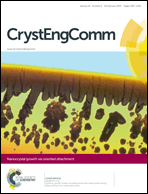
Inside front cover
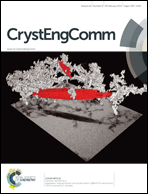
Nanocrystal growth via oriented attachment
Welcome to this CrystEngComm themed issue on the topic of nanocrystal growth via oriented attachment.

CrystEngComm, 2014,16, 1407-1408
https://doi.org/10.1039/C4CE90001D
Characterizing crystal growth by oriented aggregation
Oriented aggregation provides a route by which unique morphologies can be produced and defects incorporated into nanocrystalline materials.
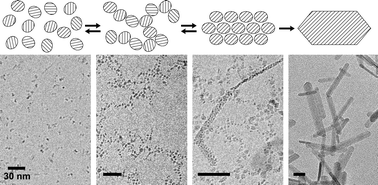
CrystEngComm, 2014,16, 1409-1418
https://doi.org/10.1039/C3CE41773E
Crystal growth by oriented attachment: kinetic models and control factors
The multiple roles of capping ligands include promoting or inhibiting aggregation and thus influencing OA, and hindering OR from occurring.
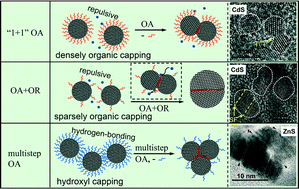
CrystEngComm, 2014,16, 1419-1429
https://doi.org/10.1039/C3CE42129E
Oriented crystal growth on organic monolayers
We highlight recent progress in understanding how organic self-assembled monolayers control crystallisation, considering both experimental and simulation studies.
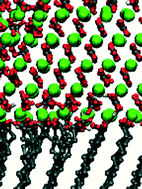
CrystEngComm, 2014,16, 1430-1438
https://doi.org/10.1039/C3CE41677A
An insight into the Coulombic interaction in the dynamic growth of oriented-attachment nanorods
The dynamic evolution of the Coulombic interaction in the oriented-attachment growth of nanorods is investigated via a Coulombic interaction expression.
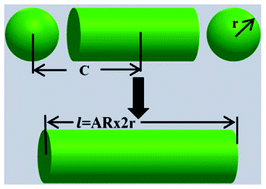
CrystEngComm, 2014,16, 1439-1442
https://doi.org/10.1039/C3CE40646F
Self-assembly of TiO2 nanoparticles into chains, films and honeycomb networks
In recent years, the preparation of nano functional materials with new properties in the way of self-assembly of nanoparticles (NPs) has gradually become a new focus in the nanoscale field.
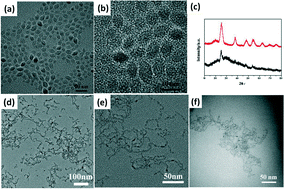
CrystEngComm, 2014,16, 1584-1591
https://doi.org/10.1039/C3CE41709C
Interatomic Coulombic interactions as the driving force for oriented attachment
In vacuum or at close proximity of nanoparticles in a solution, the physical and thermodynamic driving forces for oriented attachment of two nanoparticles come from the interatomic Coulombic interactions between them.

CrystEngComm, 2014,16, 1568-1578
https://doi.org/10.1039/C3CE41929K
Aggregation-induced growth and transformation of β-FeOOH nanorods to micron-sized α-Fe2O3 spindles
Growth and phase transition induced first by oriented aggregation of β-FeOOH particles and subsequently by aggregation of β-FeOOH onto α-Fe2O3 particles.
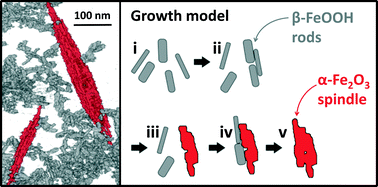
CrystEngComm, 2014,16, 1451-1458
https://doi.org/10.1039/C3CE40983J
Growth of magnesium aluminate nanocrystallites
The growth of MgAl2O4 in calcinations reveals that besides diffusion, oriented attachment is another possible growth path for nanoparticles.

CrystEngComm, 2014,16, 1579-1583
https://doi.org/10.1039/C3CE41718B
Synthesis and characterization of textured Al-doped zinc oxide films prepared by template-directed deposition
Nanocrystalline, textured, AZO films were prepared from Al3+-containing Zn-salt solutions under moderate reaction conditions using a directing organic template.
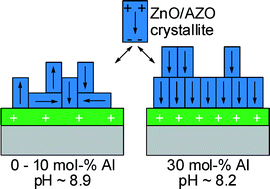
CrystEngComm, 2014,16, 1560-1567
https://doi.org/10.1039/C3CE41701H
Insights from in situ and environmental TEM on the oriented attachment of α-Fe2O3 nanoparticles during α-Fe2O3 nanorod formation
TEM investigations provide new detail of the agglomeration, coarsening and consumption of primary α-Fe2O3 nanoparticles during growth of α-Fe2O3 nanorods.
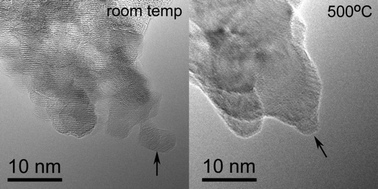
CrystEngComm, 2014,16, 1540-1546
https://doi.org/10.1039/C3CE41866A
Organic additive-free synthesis of mesocrystalline hematite nanoplates via two-dimensional oriented attachment
Uniform mesocrystalline hematite nanoplates, which showed considerable magnetism and good visible-light photocatalytic activity, were synthesized via 2D oriented attachment through controlled hydrolysis of ferric acetylacetonate in ethanol without organic additives.

CrystEngComm, 2014,16, 1553-1559
https://doi.org/10.1039/C3CE41716F
Dynamic growth modes of ordered arrays and mesocrystals during drop-casting of iron oxide nanocubes
This article identifies influential flow phenomena and dynamic mesocrystal growth modes during drop-casting of iron oxide nanocube dispersions.
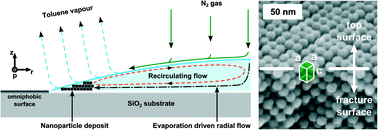
CrystEngComm, 2014,16, 1443-1450
https://doi.org/10.1039/C3CE41871E
Dipole-directed assembly of Fe3O4 nanoparticles into nanorings via oriented attachment
Novel Fe3O4 ring-like nanostructures have been prepared by a facile hydrothermal method via oriented attachment of Fe3O4 nanoparticles. Superparamagnetic Fe3O4 nanorings exhibit a high saturation moment Ms value of 75.3 emu g−1 due to ring-like assemblies with synergistic magnetism.

CrystEngComm, 2014,16, 1482-1487
https://doi.org/10.1039/C3CE41690A
Li-doped ZnO nanorods with single-crystal quality – non-classical crystallization and self-assembly into mesoporous materials
Li-doped ZnO nanorods with single-crystal quality could be obtained by an oriented detachment and were re-assembled into novel, mesoporous sensors.
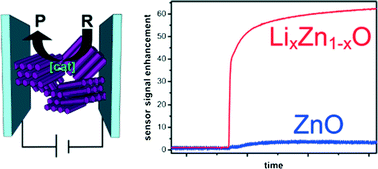
CrystEngComm, 2014,16, 1525-1531
https://doi.org/10.1039/C3CE41670D
Supramolecular effects on formation of CaCO3 thin films on a polymer matrix
Supramolecular polyrotaxanes based on cyclodextrins have been carboxylated and used as functionalized supermolecules to control crystallization of CaCO3 on polymer templates.
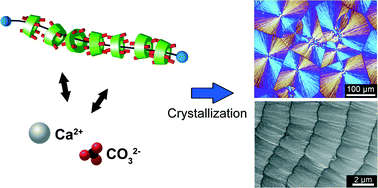
CrystEngComm, 2014,16, 1496-1501
https://doi.org/10.1039/C3CE41649F
Special grain boundaries of anatase nanocondensates by oriented attachment
Anatase condensates with [100]/(001) and [100]/(01![[1 with combining macron]](https://www.rsc.org/images/entities/char_0031_0304.gif) ) tilt boundaries.
) tilt boundaries.
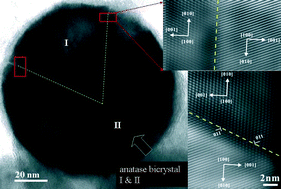
CrystEngComm, 2014,16, 1459-1465
https://doi.org/10.1039/C3CE41599F
Two-step phase transformation of anatase to rutile in aqueous suspension
Hydrothermally treated nanocrystalline anatase TiO2 phase transforms to rutile TiO2 by a two-step mechanism, interface–nucleation and dissolution–precipitation.

CrystEngComm, 2014,16, 1488-1495
https://doi.org/10.1039/C3CE41820K
Growth kinetics study revealing the role of the MPA capping ligand on adjusting the growth modes and PL properties of CdTe QDs
The concentration-dependent adsorption–desorption equilibrium of MPA dominates the growth kinetics and corresponding PL properties of MPA-capped CdTe QDs.
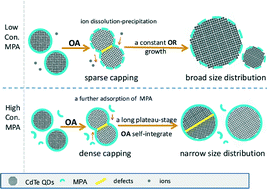
CrystEngComm, 2014,16, 1547-1552
https://doi.org/10.1039/C3CE41684D
Crystalline nanoparticle aggregation in non-aqueous solvents
The aggregation of suspended metal oxide and oxyhydroxide nanoparticles dramatically changes as a function of solvent properties. Generally speaking, solvents that strongly coordinate the metal oxide/oxyhydroxide surfaces produce the smallest and least compact aggregates, whereas those that weakly coordinate produce the largest and most compact aggregates.
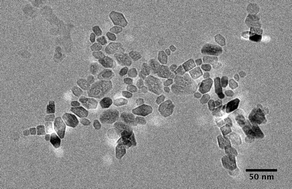
CrystEngComm, 2014,16, 1472-1481
https://doi.org/10.1039/C3CE41584H
ZnO superstructures via oriented aggregation initiated in a block copolymer melt
A fast and simple ZnO mesocrystal synthesis, which is based on a multiple stage oriented attachment process within a three-block copolymer as template-agent, is investigated in detail.
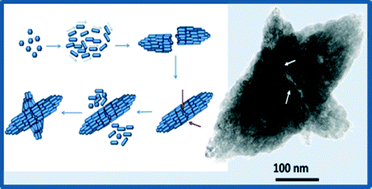
CrystEngComm, 2014,16, 1502-1513
https://doi.org/10.1039/C3CE41868E
WO3/TiO2 heterostructures tailored by the oriented attachment mechanism: insights from their photocatalytic properties
Oriented attachment is an important mechanism to WO3/TiO2 heterostructure formation, evidencing the role of interfaces in photoactivity improvement.
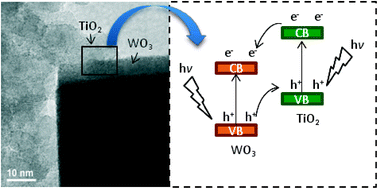
CrystEngComm, 2014,16, 1514-1524
https://doi.org/10.1039/C3CE41668B
On the twinning and special grain boundaries of bimetallic particles via pulsed laser ablation of bulk AuCu in a vacuum
Fcc-type AuCu3 nanocondensates with 5 sets of {111}-motif twin boundaries (denoted as I to V) with {100} edges.

CrystEngComm, 2014,16, 1532-1539
https://doi.org/10.1039/C3CE41596A
Kinetics of crystal growth of nanogoethite in aqueous solutions containing nitrate and sulfate anions
Nanogoethite was prepared by reacting ferric sulfate or ferric nitrate with potassium hydroxide. Higher activation energy was found for oriented attachment-based growth in the sulfate compared to the nitrate system.

CrystEngComm, 2014,16, 1466-1471
https://doi.org/10.1039/C3CE41685B
About this collection
Welcome to this CrystEngComm themed issue on the topic of nanocrystal growth via oriented attachment – guest edited by Dr R. Lee Penn, University of Minnesota, Dr Hengzhong Zhang, University of California, Berkeley, Dr Zhang Lin, State Key Laboratory of Structural Chemistry, and Dr Helmut Cölfen, University Konstanz.